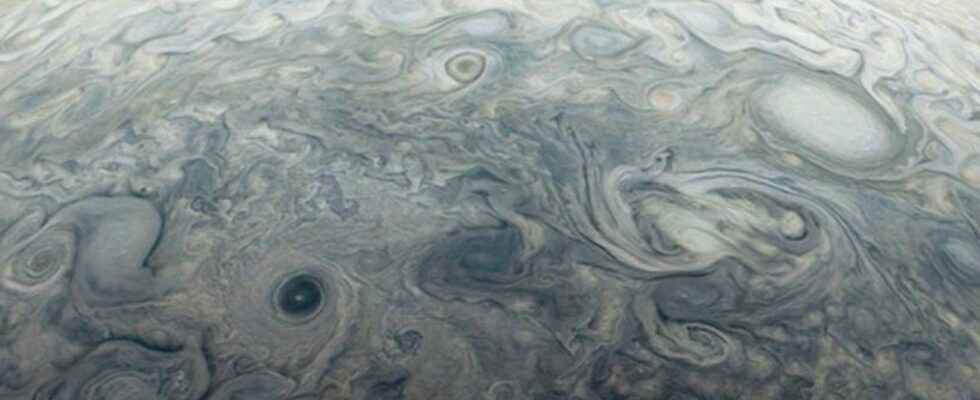As Futura explained in a previous article, the rise of astronautics during the second half of the 20e century made it possible to transpose the models and techniques of geophysics and geochemistry to other planets in order to carry out comparative planetology and see how the other planets had evolved and had been structured under different conditions. It is therefore a little as if nature were a gigantic laboratory having experiments under various conditions with the planets, which allows us to understand the influence of such and such a parameter on the state of a planet when it is varied. We obviously cannot do the same with the Earth which would be in a laboratory where we would do these experiments (to a certain extent, numerical simulations Where analoglike experience VKScan however help us to understand the planets).
Geophysics and geochemistry are internal as well as external and it is for this reason that these sciences do not only apply to volcanism or the origin of magnetism terrestrial but that they also make it possible to model theatmosphere and the climate of our blue planet. Doing comparative planetology therefore also means modeling and understanding the atmospheres of VenusMars and gas giants. In turn, this can help us better understand the Earth and its climate.
All science is based on experimental data and since its inception orbit around Jupiter in 2016, the probe Juno of the Nasa provides us with copious amounts of it. The JunoCam instrument thus delivered to the Noosphere gigabytes of images taken during 40 orbits around Jupiter, some of which were taken just a few thousand kilometers above the giant’s atmosphere.
A presentation of the Juno mission. To obtain a fairly accurate French translation, click on the white rectangle at the bottom right. The English subtitles should then appear. Then click on the nut to the right of the rectangle, then on “Subtitles” and finally on “Translate automatically”. Choose “French”. © NASA, Jet Propulsion Laboratory
However, this is the problem, as explained by the postdoctoral researcher in physical and astronomy Ramanakumar Sankar: ” There are so many images that it would take our small team several years to review them all. We need the public’s help to identify which images have whirlwinds, where they are and how they appear. With the catalog of features (especially vortices) in place, we can study the physics behind how these features form and how they relate to the structure of the atmosphere, especially under the cloudswhere we cannot observe them directly “.
For this reason, with his fellow researchers at the University of Minnesota and with the support of NASA, he has created a new citizen science project that allows volunteers to play an important role in helping scientists learn more about the planet. atmosphere of Jupiter. Citizen scientists can indeed help astrophysicists from home, and with a short training accessible to all, to categorize tens of thousands of amazing images taken from Juno.
A new Zooniverse avatar, Jovian Vortex Hunter
The project was called in English Jovian Vortex Hunter (whirlwind hunter jovians) and it contains over 60,000 images. He is part of the gate citizen science zoouniverseextension of the original project Galaxy Zoo which invited Internet users to rank the galaxies. Futura has already devoted several articles to this portal, which gives everyone the opportunity to put themselves in the shoes of a researcher on the cutting edge of research by becoming, for example:
We’re launching ???? the Jovian Vortex Hunter project today! If you like pretty pictures of Jupiter and colorful clouds????☁️, join us at https://t.co/3BhDPMAfu2 to help us classify different types of clouds on Jupiter!
— The Zooniverse (@the_zooniverse) June 21, 2022
The website of Jovian Vortex Hunter (JVH) explains: “ Jupiter’s atmosphere is very similar to ours: there are clouds of different shapes and sizes.On Jupiter, most clouds are made up of molecules chemicals other than water and can measure several thousand kilometres.Some clouds are also created from powerful storms more than 50 kilometers high and hundreds of kilometers in diameter.Understanding how these clouds form is very important to understanding Jupiter’s atmosphere, and the processes that create the amazing features we see.
The different clouds on Jupiter form under different atmospheric conditions (e.g. storms, whirlpools), similar to how we get different types of clouds when the atmosphere is calm or stormy on Earth.The types of clouds on Jupiter are also highly dependent on the chemical that forms them.Jupiter has three main cloud layers: clouds ofammonia are mostly the ones you can see since they form at the very top, followed by a layer of ammonium hydrosulfide (a key ingredient in stink bombs, so those clouds aren’t the smelliest!) .Deep in the atmosphere (about 150 kilometers below the ammonia clouds) are thick clouds of water.
In order to understand how these different clouds form, we need to look at the diversity of cloud characteristics in the Jovian atmosphere.In this project, we will create a catalog and group images from JunoCam into different characteristic classes of the clouds present. »
To help citizen scientists identify atmospheric vortices, the project Jovian Vortex Hunter offers several guides and tutorials helpful video. Each image will be reviewed by at least 16 people. In the end, the catalog will be used to feed a network of neurons which will serve to unlock secrets of the Jovian atmosphere from other similar images by exhibiting hidden characteristics and regularities related to physics and chemistry yet to be deciphered.
Interested in what you just read?
